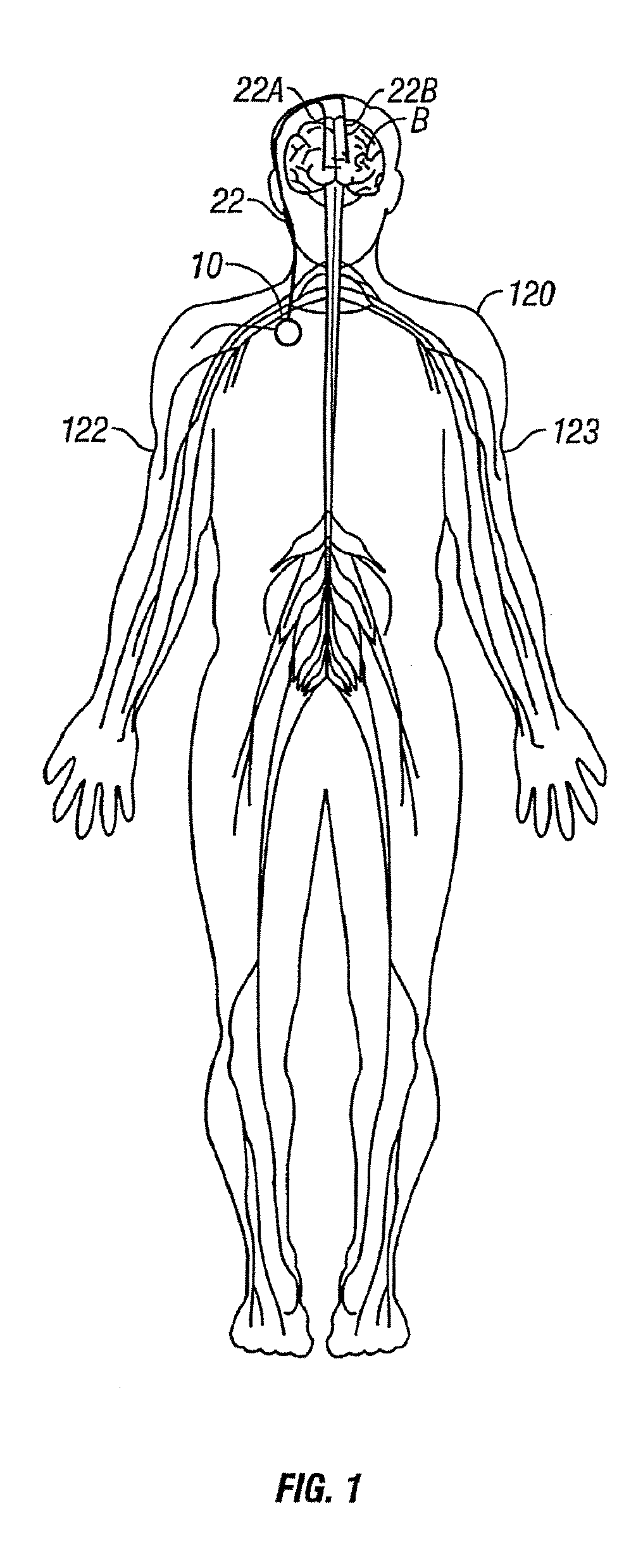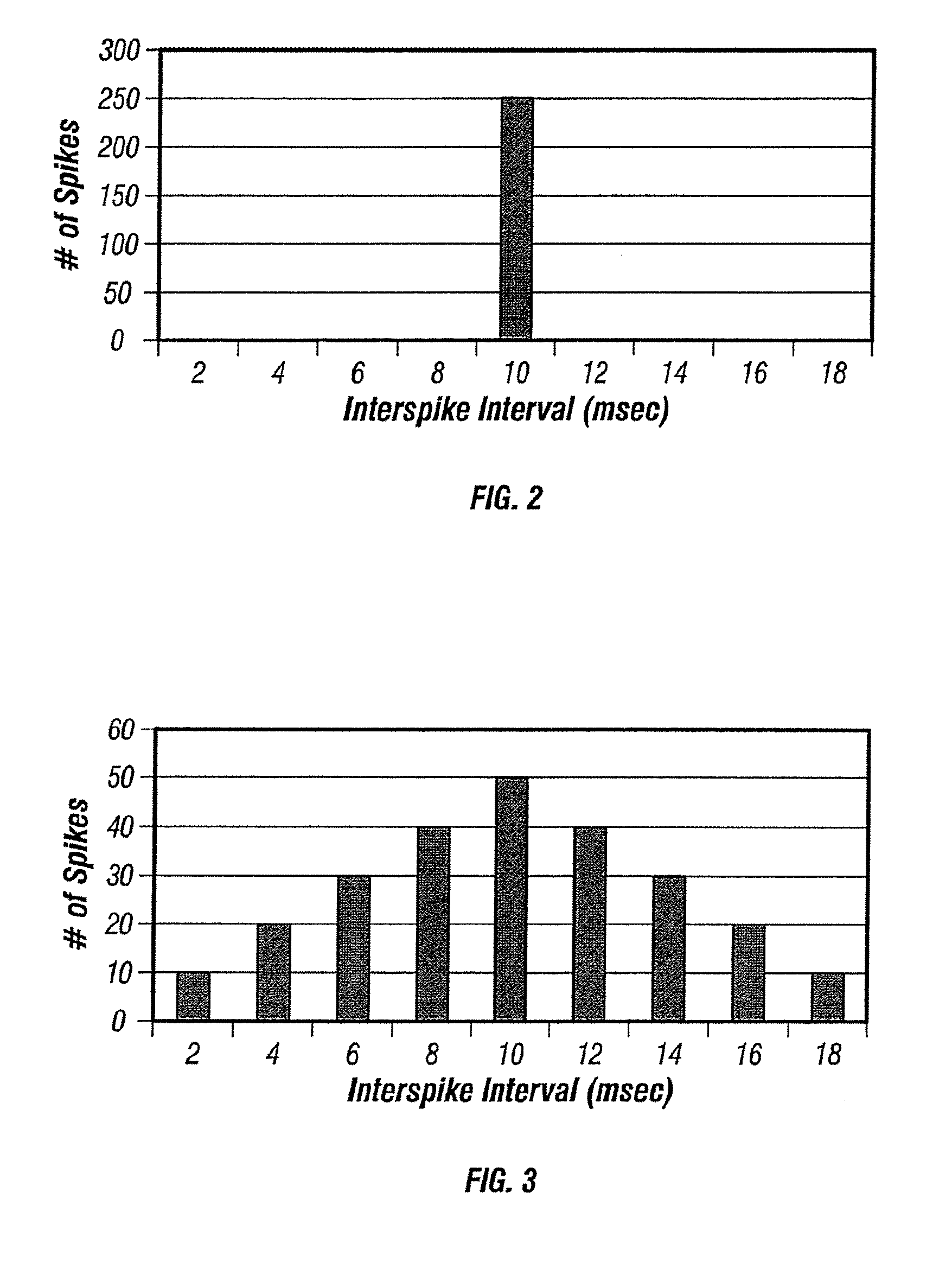Variation of neural stimulation parameters
a neural stimulation and parameter technology, applied in the field of neural stimulation parameter variation, can solve the problems of high artificial activity and non-physiologic pattern, 422 patent, and large drain on the battery of the implanted stimulator, and achieve the effect of minimizing the loss of therapeutic
- Summary
- Abstract
- Description
- Claims
- Application Information
AI Technical Summary
Benefits of technology
Problems solved by technology
Method used
Image
Examples
Embodiment Construction
[0028]FIG. 1 depicts a microprocessor-controlled neural stimulation device 10 in accordance with an illustrative embodiment of the invention. Device 10 is preferably implanted below the skin of a patient, or alternatively, may be an external device. A lead 22A is positioned to stimulate a specific site in the brain (B). Device 10 may take the form of a modified signal generator Model 7424 manufactured by Medtronic, Inc. under the trademark Itrel II. Lead 22A may be any lead suitable for stimulation. The distal end of lead 22A terminates in one or more stimulation electrodes generally implanted into a portion of the brain such as the thalamus, the internal capsule, the globus pallidus, the subthalamic nucleus or other neural structure by conventional stereotactic surgical techniques. Any number of electrodes may be used for various applications. Each of the electrodes is individually connected to device 10 through lead 22A and conductor 22. Lead 22A is surgically implanted through a ...
PUM
 Login to View More
Login to View More Abstract
Description
Claims
Application Information
 Login to View More
Login to View More - R&D
- Intellectual Property
- Life Sciences
- Materials
- Tech Scout
- Unparalleled Data Quality
- Higher Quality Content
- 60% Fewer Hallucinations
Browse by: Latest US Patents, China's latest patents, Technical Efficacy Thesaurus, Application Domain, Technology Topic, Popular Technical Reports.
© 2025 PatSnap. All rights reserved.Legal|Privacy policy|Modern Slavery Act Transparency Statement|Sitemap|About US| Contact US: help@patsnap.com



